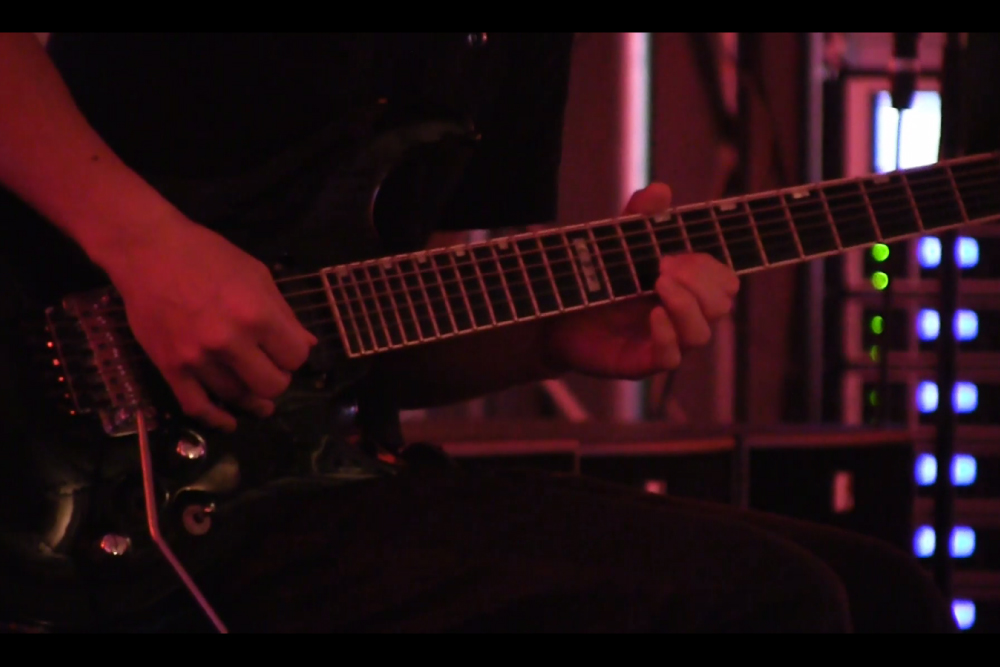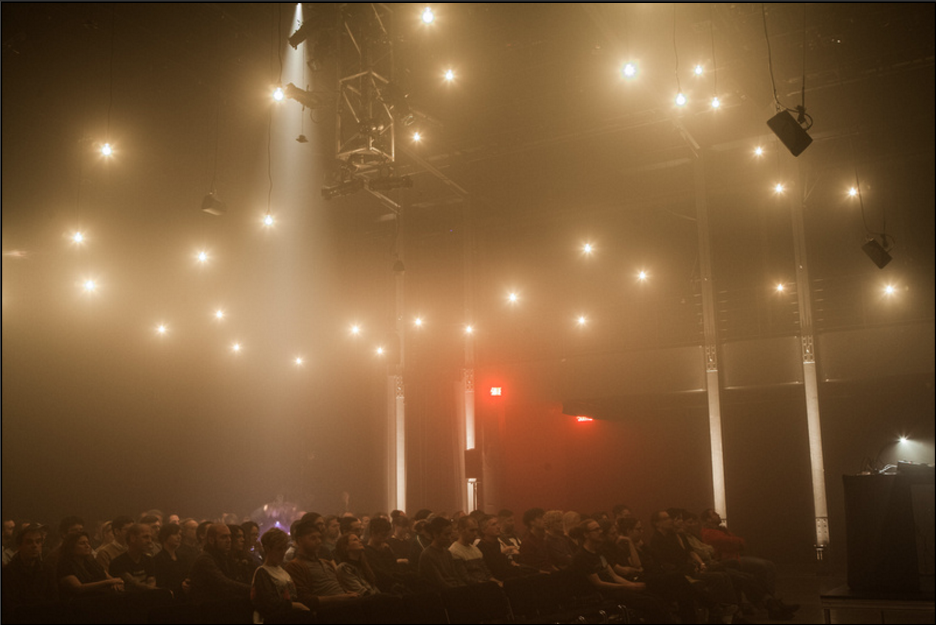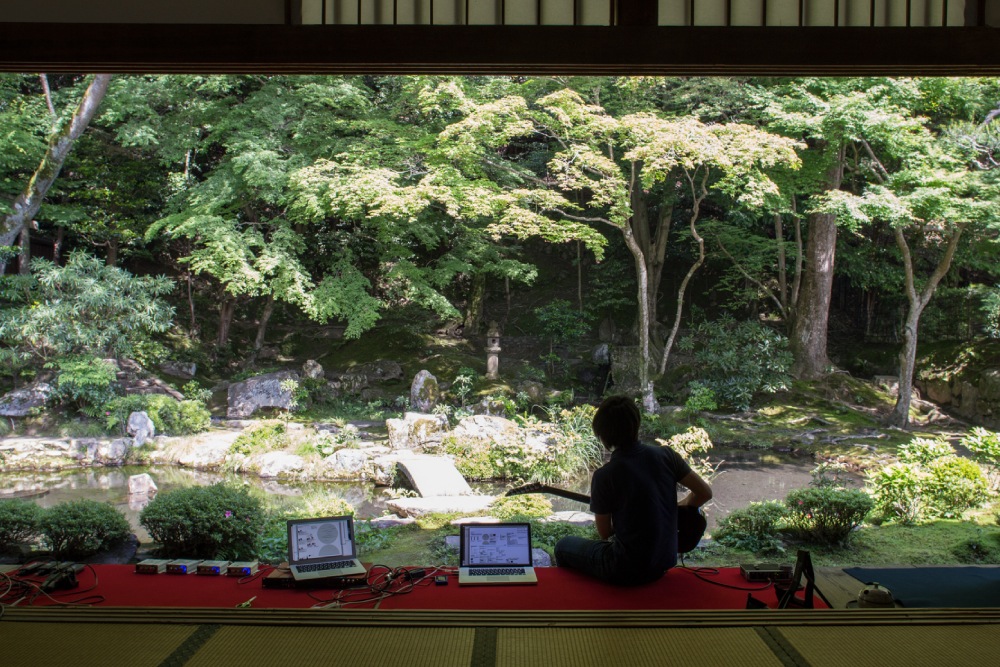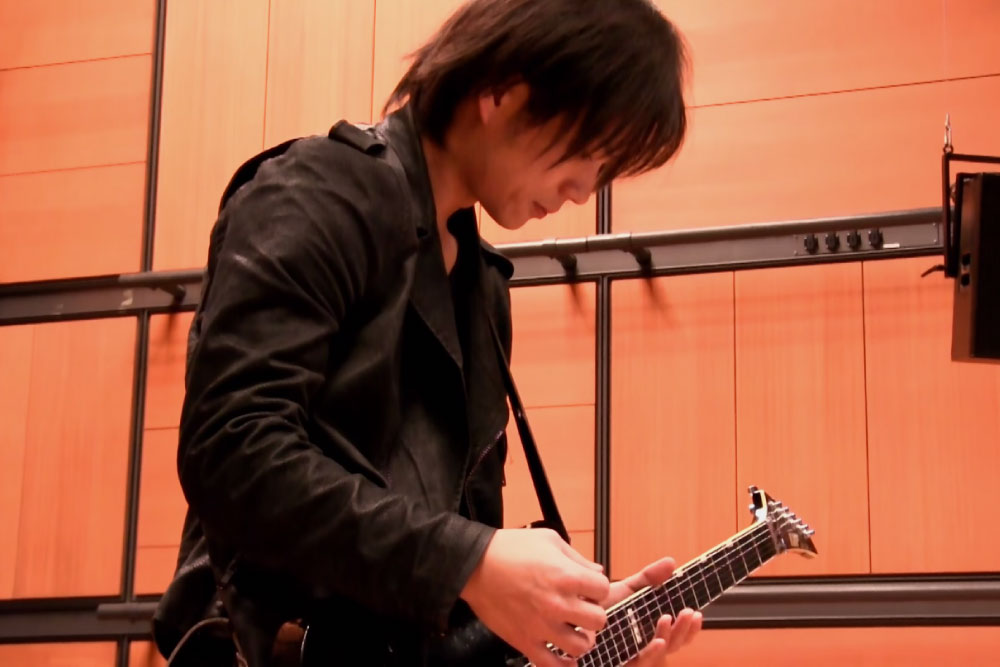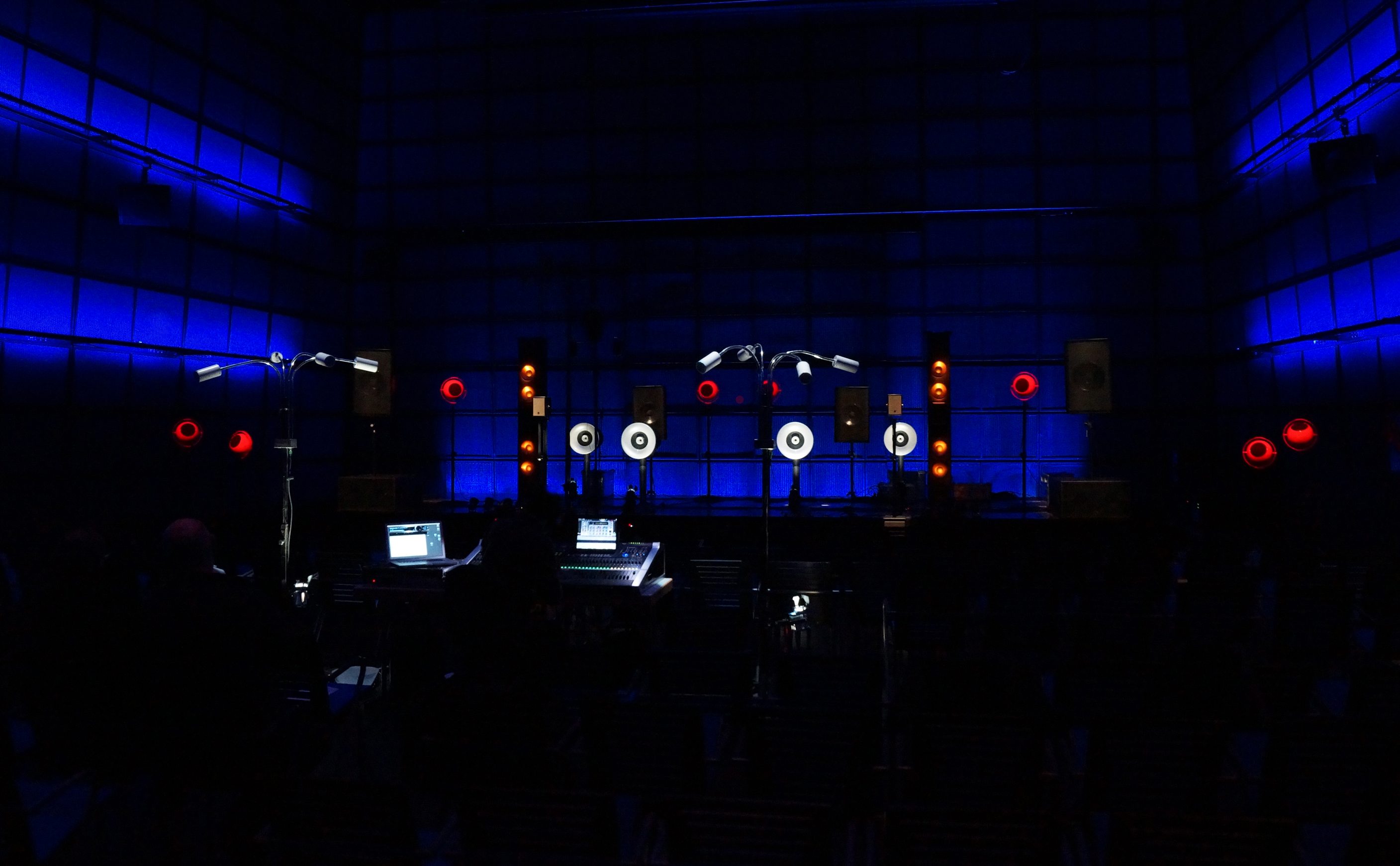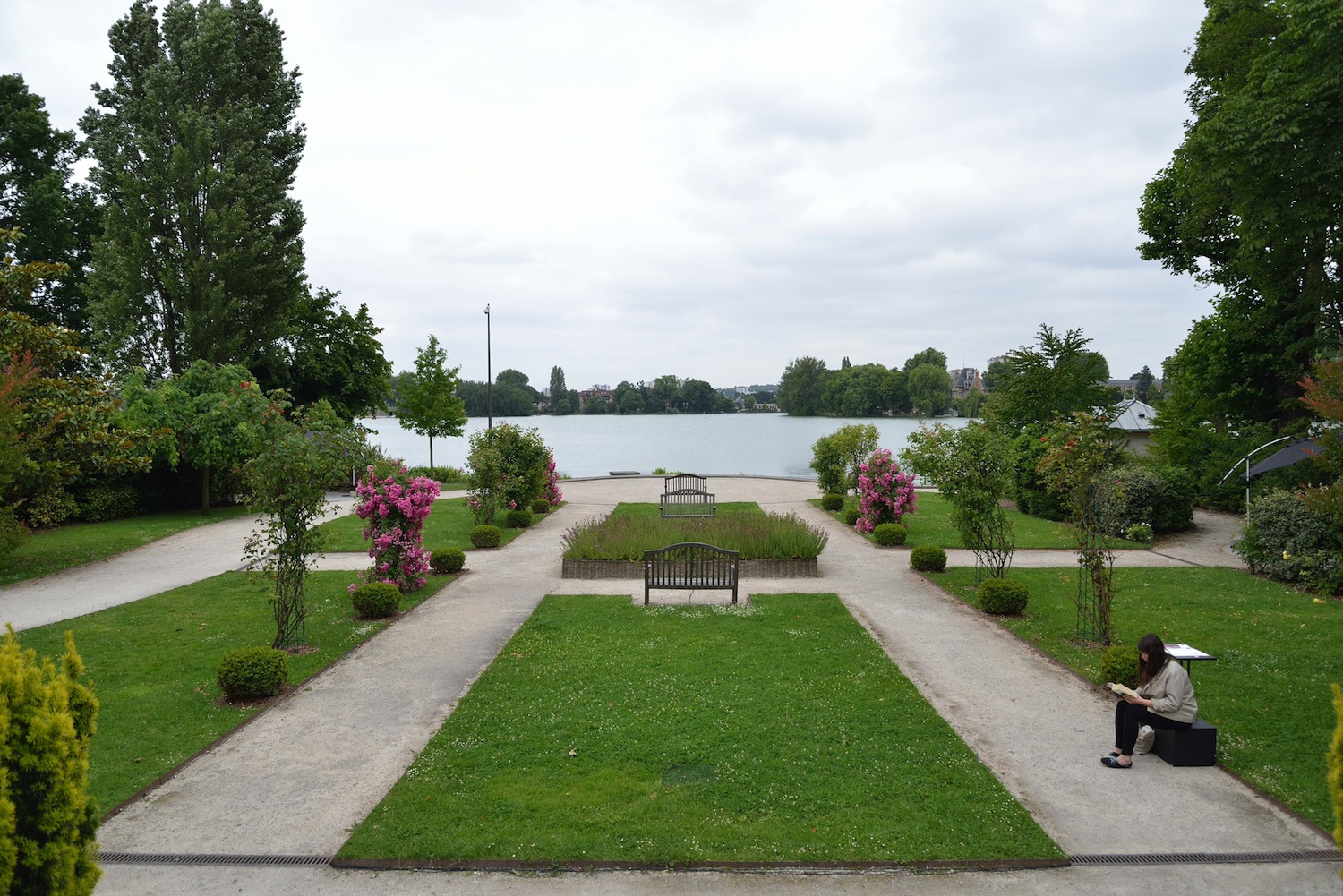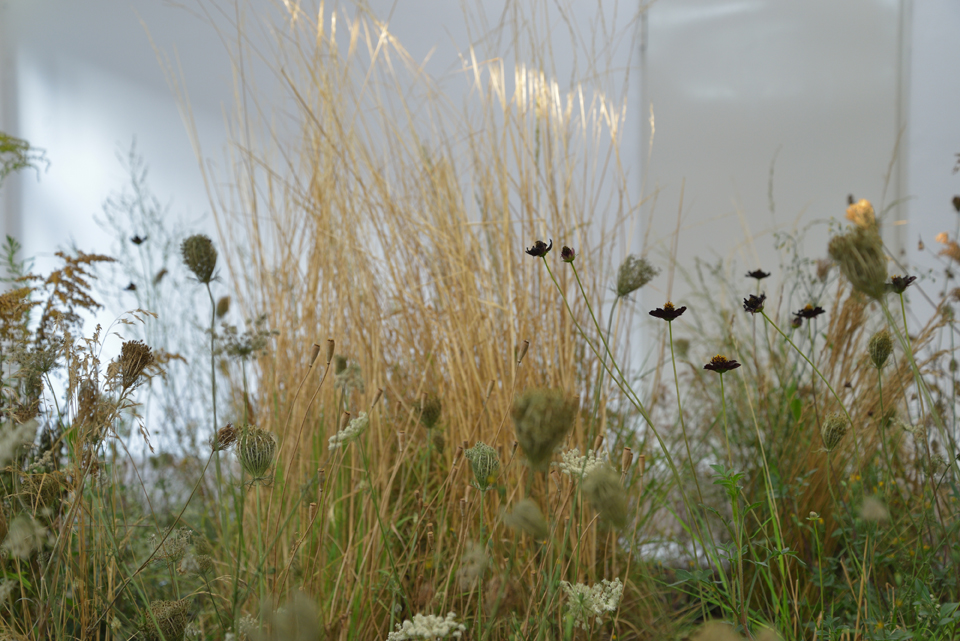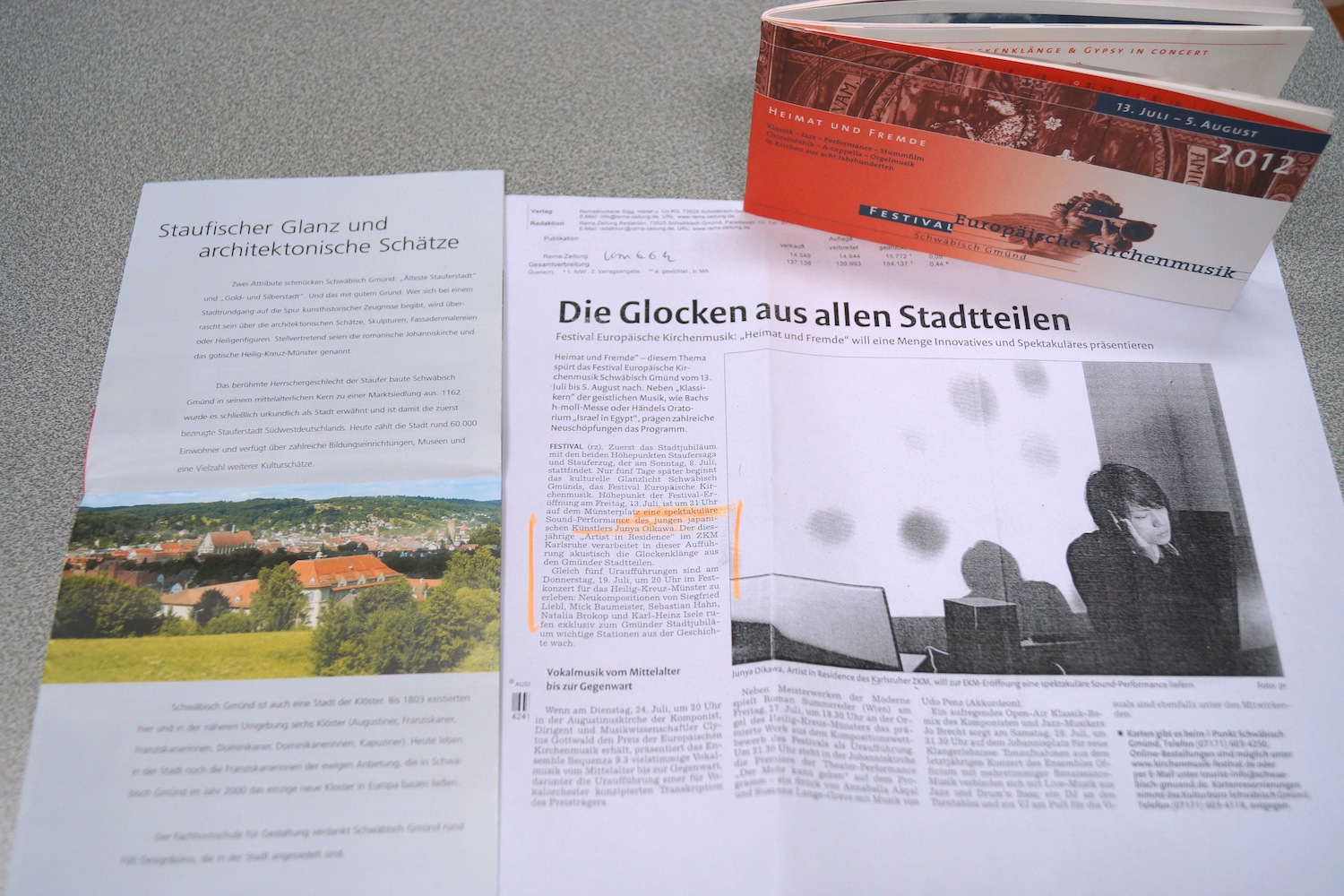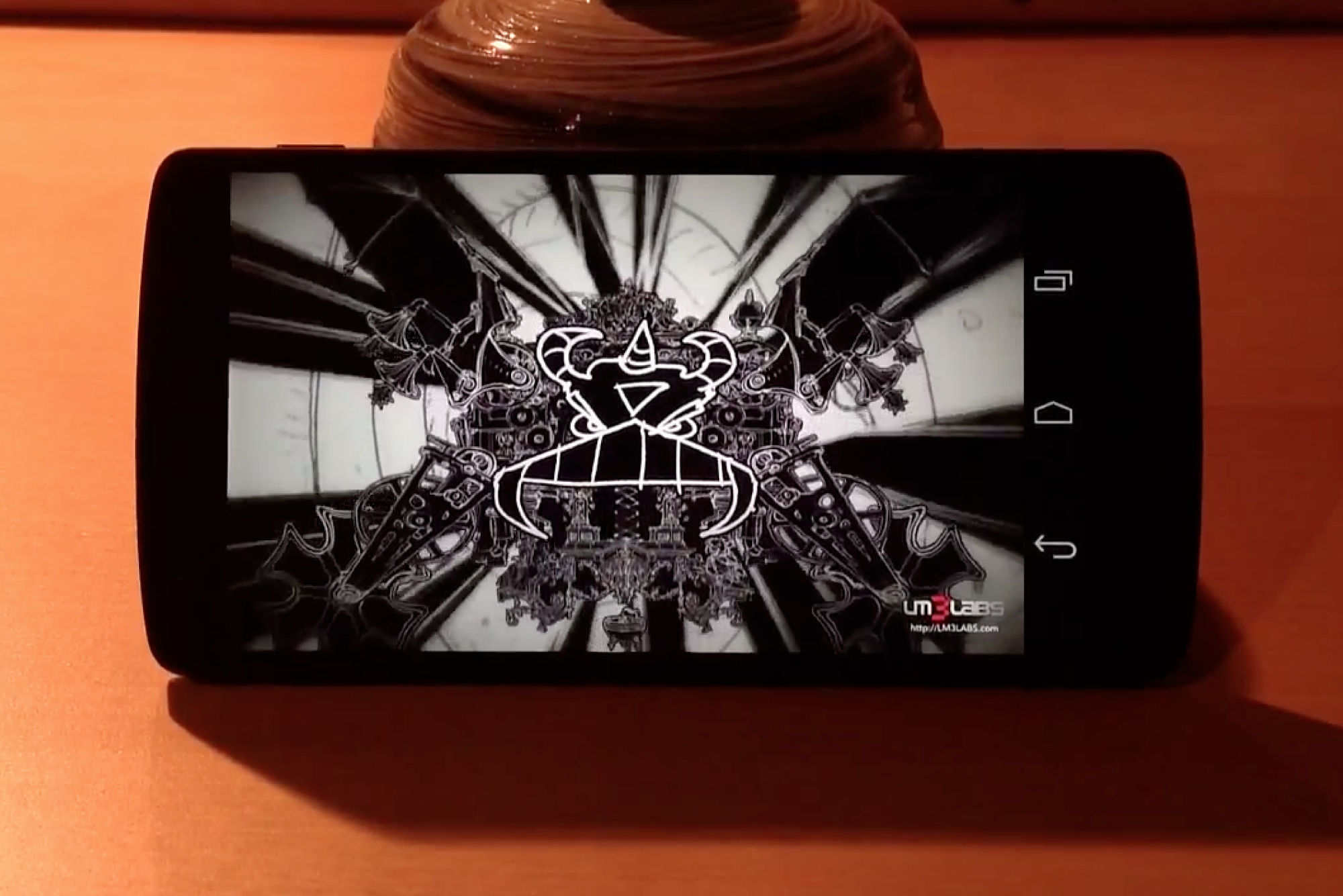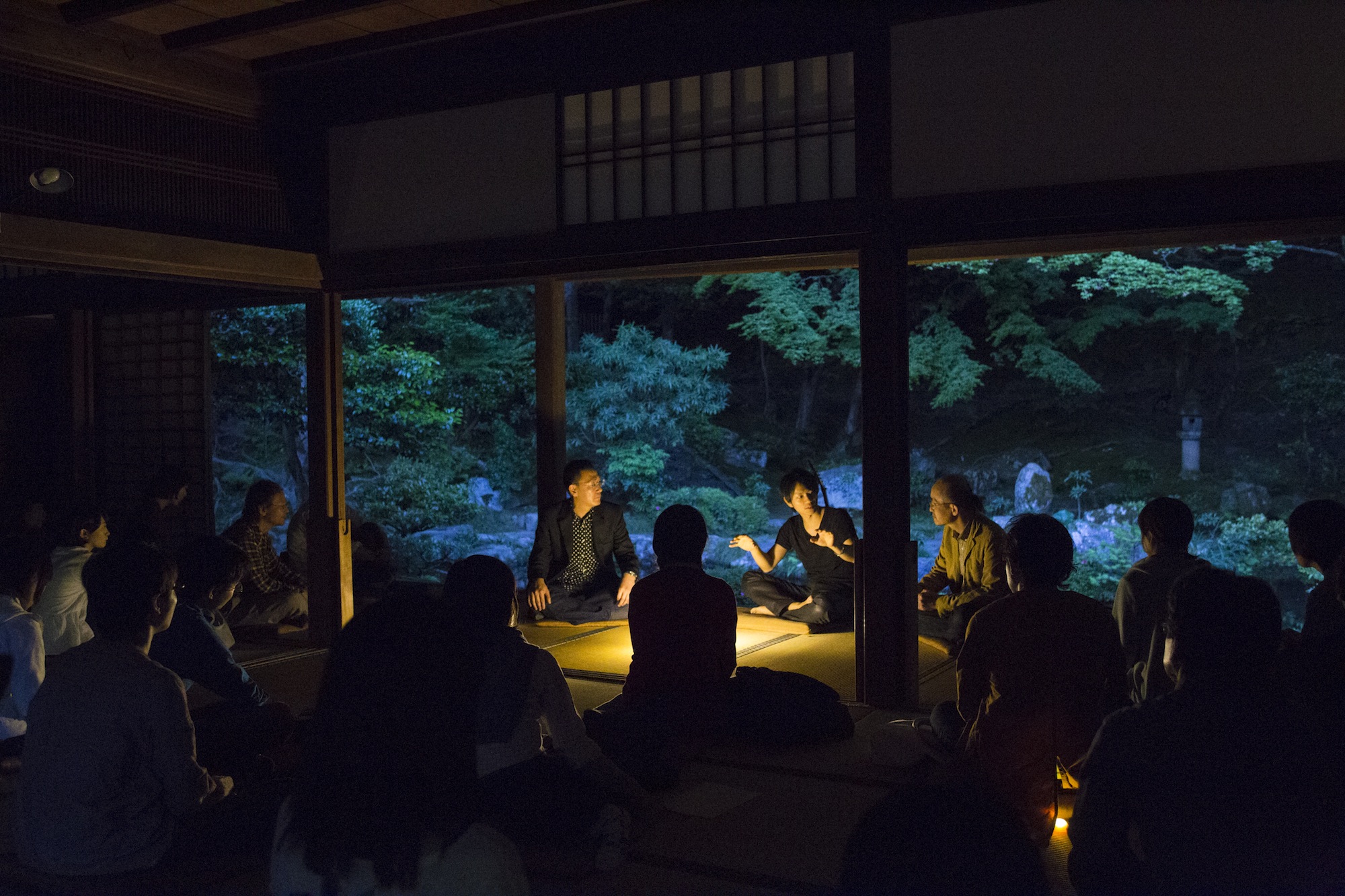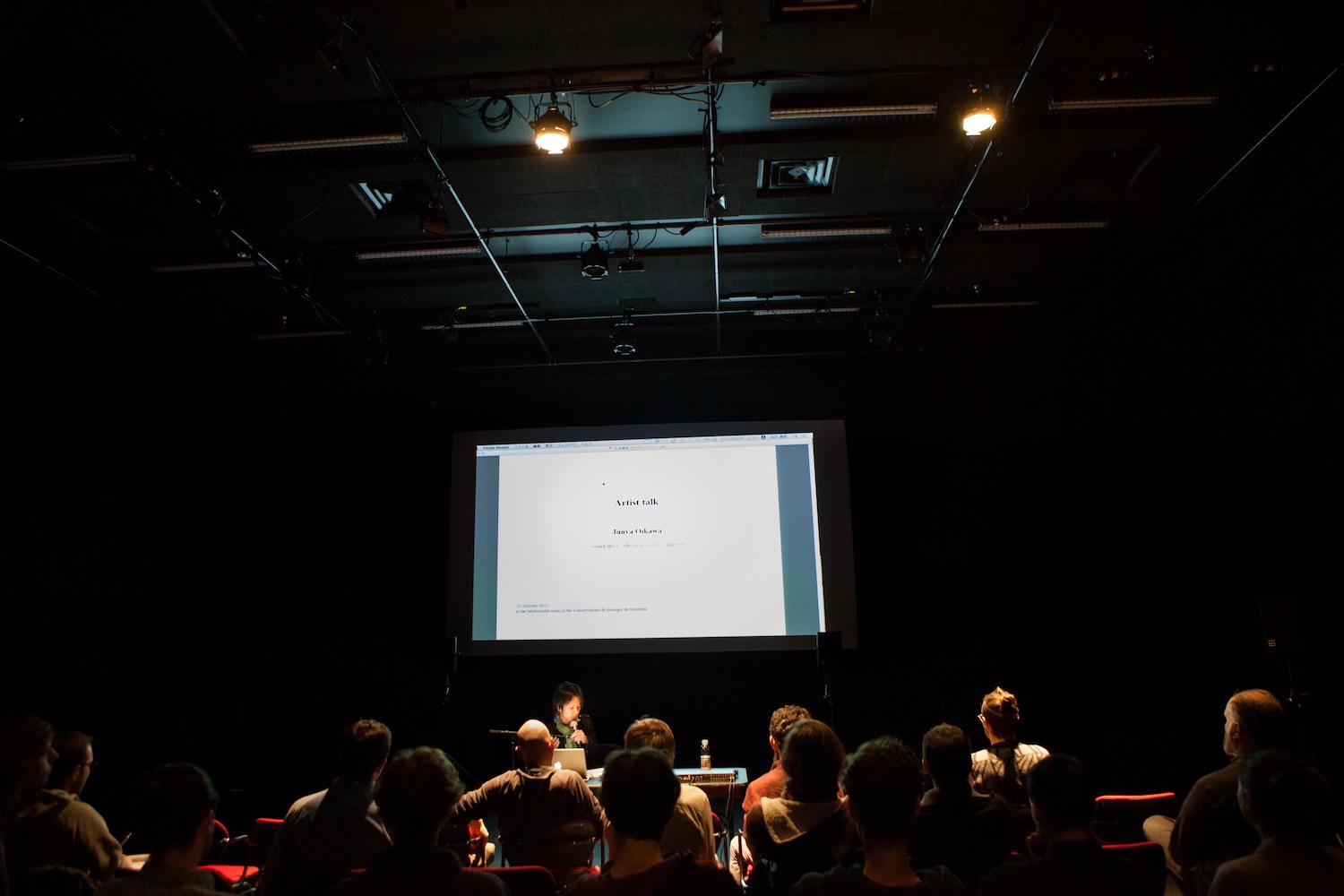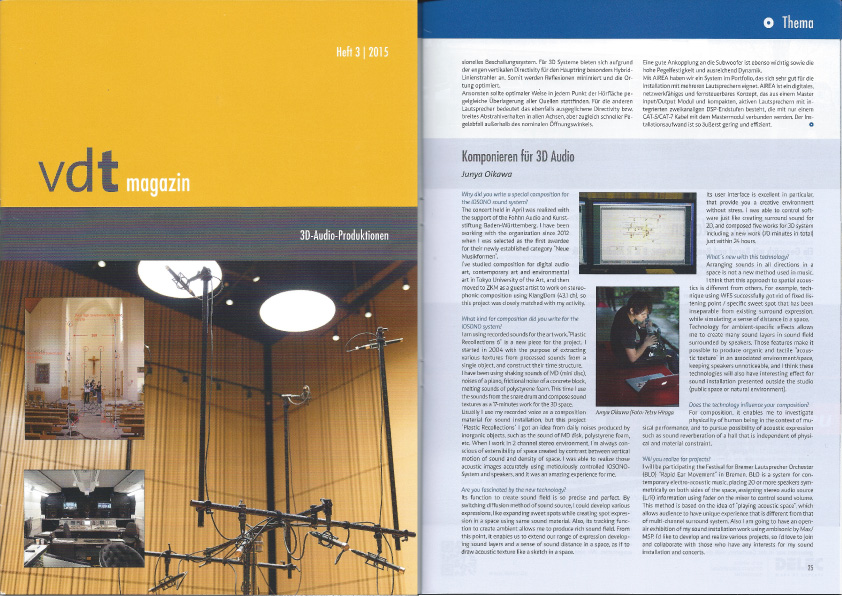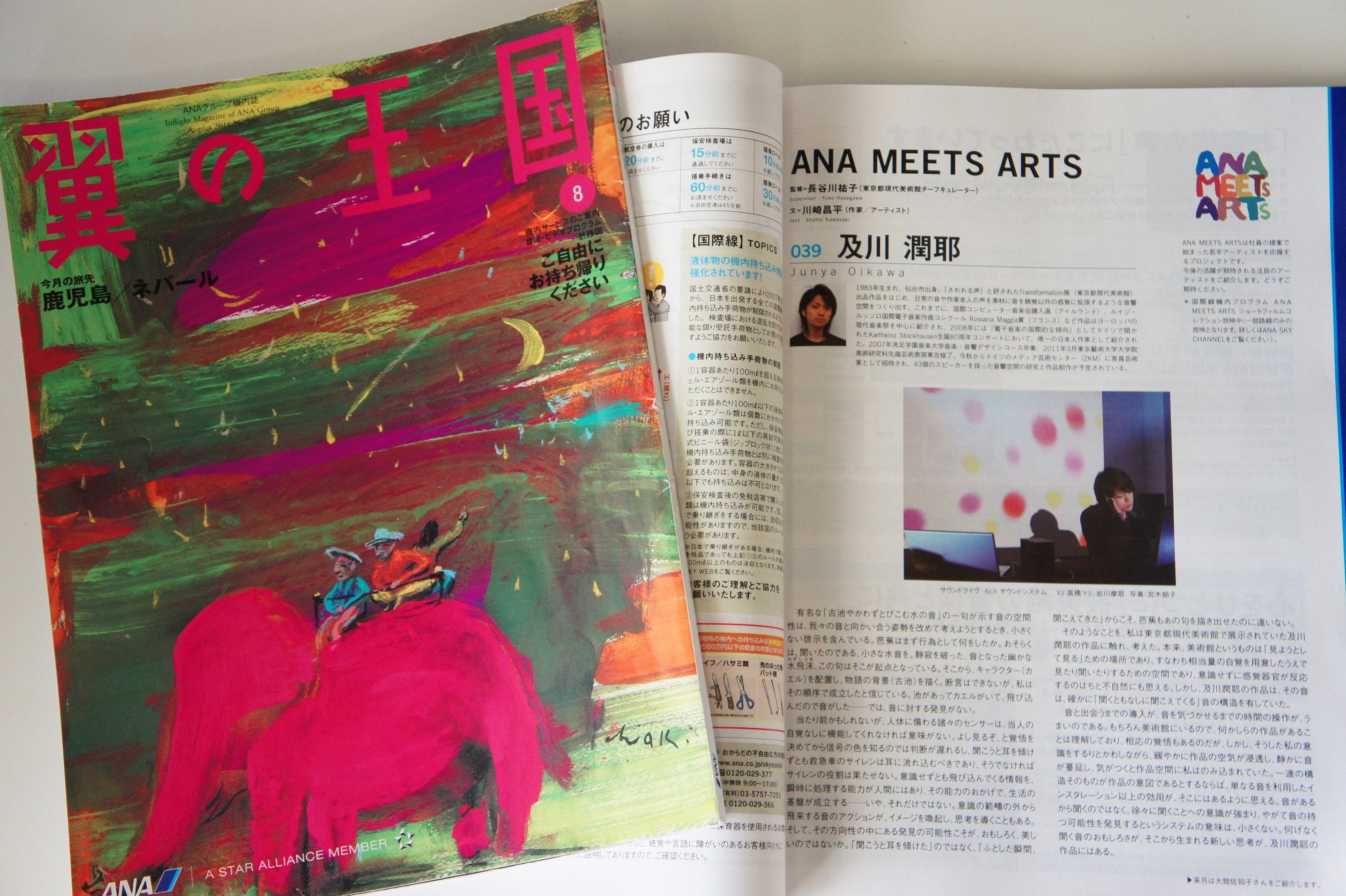PROJECTS EXAMPLES
Oikawa's activity mainly spread across three fields :
electronic sound concert, electronic guitar concert and sound installation in the natural environment.
Oikawa's activity mainly spread across three fields :
electronic sound concert, electronic guitar concert and sound installation in the natural environment.
CONCERTS
|
|
VOICE LANDSCAPE PROJECTS
In this project Oikawa attempted to pursue the expression of new presence beyond the border from existing life by his recorded voice.
The project was exhibited in the digital art biennale, "BAINS NUMERIQUES #8" held in France, 2014 and won the critic award.
The project was exhibited in the digital art biennale, "BAINS NUMERIQUES #8" held in France, 2014 and won the critic award.
MORE INFORMATION
GUITAR EXPERIMENTS
under construction…
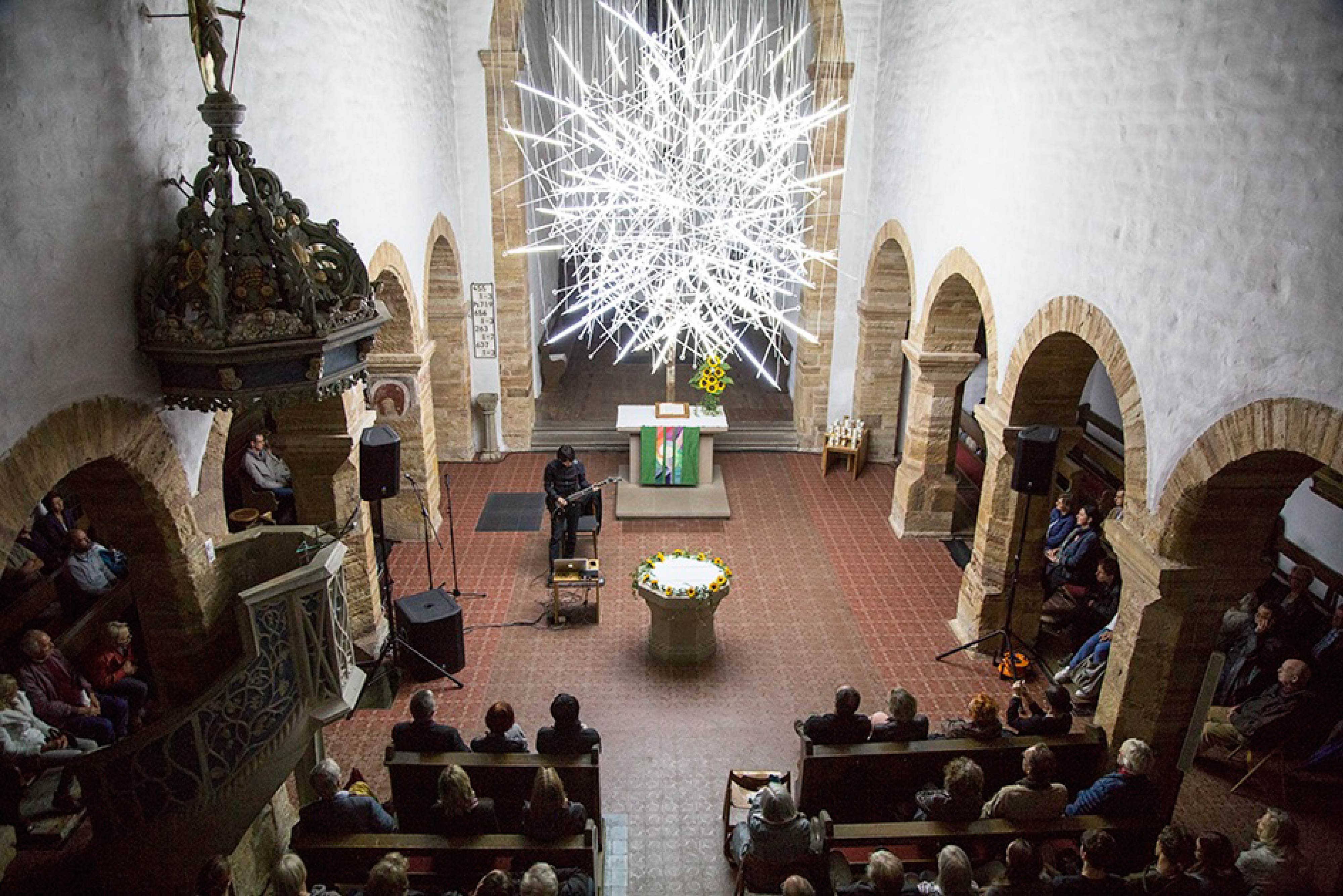
Photo:Michiko Isono/Installation:Hitoshi Kuriyama
|
GROWING VERSE PROJECTS
This project from Junya Oikawa attempts to establish sonic semantics and seeks new means of communication between people via music and gestures.
The project was premiered in the digital art biennale, "BAINS NUMERIQUES #9" held in France, 2016
and won the award for "EDIGMA Semibreve" in Portugal, 2016.
The project was premiered in the digital art biennale, "BAINS NUMERIQUES #9" held in France, 2016
and won the award for "EDIGMA Semibreve" in Portugal, 2016.
COMMISSION PROJECTS
MASTER-CLASS / ARTIST TALK
REVIEW / INTERVIEW
|
CD review - Internal Static | Kyoka
Junya Oikawaさんとの初対面は、2014年3月11日。 sub-tleさんのリリパの一環のDommune出演がきっかけでした。 ドイツ、onpa)))))という繋がりから、Tukicoさん、Junichi Akagawaさんと4人で共演させていただきました。 サウンドチェック中に、Oikawaさんからミキサーの使い方を聞かれたんですが、既にそれが衝撃でした。「どうやってここまで来たんだ…」と。他人事ながら、少しだけ心配になりました。 ですが、その後ライブ本番の出音一発目を聞いた瞬間「わ!天才だったのか!」と思いました。 シャープに透き通り硬質な音が、空間を複数に分断するようにシャープでカラフルに踊ってました。 そのDommune以来、度々交流させていただいた中で、Oikawaさんのマイペースで独自な作品の世界、そこにあるピュアな知性やセンス、人間性など、すごく信頼できると思うようになりました。 今作のInternal Static - experiment in the atelier。 聴けて良かったです。 安心して理解を深めながら何度も聴ける音だと思いながら、すでに数回リピートしてます。 そもそも、安心して理解や音の存在への想像を深めていける作品に出逢えること自体、貴重だと思います。貴重だからこそ、自分の成長にも繋がる音だと思うので、今回これが聴けて本当に嬉しかったです。 最後に余談です。 一発録りでこの仕上がりだと言うこと。そして、注意書きが『本作には40Hzの超低周波が含まれています。』と『ご視聴にはサブウーハ付きのスピーカーシステム、またはヘッドホンをご使用下さい』と言う事。とってもシンパシーがわきました。 |
|
|
|
"Move and Stop" Gestures Trigger Sonic Semantics in Portugal
A combination of hand and body movements and light, will be just one of the ways the crowds will be able to appreciate and explore sound at the upcoming art and music festival Semibreve, which takes place in Braga, Portugal this weekend. One of the commissioned pieces will be the sight-specific GrowingVerse - No.1 by Japanese artist Junya Oikawa, the 2016 recipient of the EDIGMA Semibreve Award. The project is part of Oikawa's digital sound explorations—he also performs and produces electroacoustic pieces—and sees the artist attempting to "establish sonic semantics" by having the audience create music through "move and stop" gestures. For this installation, which combines music education, sound communication, and sound design, Oikawa will allow up to three people to move around under pools of LED spotlights in a dark room. This in turn will allow them to stop and start Oikawa's custom compositions. Sensors will detect their movements and then software will program these into steric acoustic effects and phrases. Because the gestures will be random and arbitrary from the audience, Oikawa's musical compositions have to be able to react appropriately without sounding discordant. To do this he decided to do away with beginnings: "I tried not to fix the beginning of the music, and my focus was how to create communication between the musical environment and the audience in real time," the artist tells The Creators Project. "When we think about the definition of 'music' in general, there are fixed beginnings and ends of the sound, which you don’t see in my piece. The first note—the beginning of music—would differ for each person according to individual gestures, allowing free expression using sound phrases to create their original sound filling the space." Also key to the experience is the concept of motion and stillness, which is not only how the audience will engage with the installation, but also references the Japanese word Ma. "It can be translated as 'pause,' 'interval,' or 'space' between two things which is more related to the idea of human imagination and environment—functioning as a meditation tool in the dark room, while people can also enjoy the interaction between the movements of hand and sound as some sort of physical expression," explains Oikawa. "My purpose is focusing on how to inspire the human consciousness for communication. Through 'stop and motion' the work encourages us to experience the sound with 'attention and concentration,' and it would be my pleasure if it allows people to get the joy of creating music in interaction with others." Text:Kevin Holmes//The Creators Project - UK http://thecreatorsproject.vice.com/en_uk/blog/stopping-starting-gestures-sonic-semantics-portugal 「静と動」のジェスチャーによって引き出される、音の意味 - ポルトガル / 2016年10月 テキスト : Kevin Holmes / The Creators Project - イギリス 手と身体の動き、そして光のコンビネーション。これは今週末にポルトガル、ブラガで開催される芸術と音楽の祭典、Semibreveでの音の鑑賞方法の一つである。 フェスティバルの委託作品の一つが、日本人アーティスト・及川潤耶のサイトスペシフィックな作品で、2016年度のEDIGMA Semibreve Awardを受賞した「Growing Verse - No.1」だ。本作は、電子音響作品の演奏と制作も手がける及川のデジタルサウンドを追究するプロジェクトの一部であり、「動きと静止」の動作で観客が「音楽」を作り出す事によって、「音の意味」を確立する試みである。 音楽教育、サウンド・コミュニケーション、サウンドデザインの要素を組み合わせたこのインスタレーションは暗室に設置され、一度に三人の観客がLEDのスポットライトの下で自由に動く事が可能だ。そして観客達は、及川独自の音楽構造を再生・停止する事が出来る。鑑賞者の動きをセンサーが感知し、ソフトウェアのプログラムによってその動きが立体音響、そしてフレーズとなって立ち現れる。鑑賞者のジェスチャーはランダムで不作為なものである。 従って、及川の音楽構造は不協和音を生み出さぬよう、適切に反応する必要がある。それを実現する為に、及川は「始まり」の概念を排除した。「今回、音楽の[始り]を固定せず、音楽環境と観客のリアルタイムなコミュニケーションをどのように創り出すかに焦点をあてました。[音楽]の一般的な定義を考えたとき、そこには必ず音の始まりと終わりが定められています。しかし今回の私の作品にはそれがありません。最初の音、つまり音楽の始まりは、個々のジェスチャーによってそれぞれ異なり、音のフレーズ(節)を使って独自の音楽を創り出す事で、この音響空間内で自由に表現することができるんです」と、及川は語る。 本作の体験におけるもう一つの鍵となるのは、「動きと静止」の概念である。それは単にインスタレーションに対する観客の振る舞いを指すだけではなく、日本語の「間」という言葉に繋がっている。 及川はこう説明する。「[間]は、二つのものの間の[pause](休止)や[interval](間隔)と解釈される言葉で。人間の想像や空間に結びつく言葉です。[間]は暗室での瞑想ツールであると同時に、手の動きと音のインタラクションによるある種の身体表現を促すものです。僕がテーマとしているのは、コミュニケーションのために人間の意識をどう誘発するか、ということです。[動きと静止]によって、鑑賞者はより意識的に、集中して音を体験することができます。他者とのインタラクションを通して、音楽を作る行為を楽しんでもらいたいと思っています。」 抜粋元 (英語) “the creators project” http://thecreatorsproject.vice.com/en_uk/blog/stopping-starting-gestures-sonic-semantics-portugal |
|
Bei Glockengeläut mitten im virtuellen Turm
Auf dem Kirchturm bei vollem Geläut inmitten der Glocken sitzen? Der akustische Eindruck dürfte den Besuchern des ersten Konzerts der neuen Kernmacherei-Saison im Villinger Theater am Ring im Gedächtnis bleiben. Zu Gast war der Komponist für neue elektronische Musik Junya Oikawa. Nicht mittels banalem Stereosound, sondern durch eine weitaus aufwändigere Raumklang-Technik realisiert der japanische Akustik-Künstler ein solches auditives "Beamen". Würde es ihm jedoch nur um eine möglichst realistische Wiedergabe gehen, verflöge der spektakuläre Reiz bald – zwei Stunden im virtuellen Surround-Sound-Glockturm hielte kaum jemand aus. Junya Oikawa spielt jedoch mit sehr vielen Einheiten der akustischen Wahrnehmung. So sind Stille und sich daraus erhebende leiseste Töne genauso ein Element wie Takte, räumliche Zuordnung, natürliche wie auch künstliche Klänge.  Zu Beginn seines Konzerts im Hinterbühnenraum des Theaters am Ring quoll beispielsweise ein Rauschen niederer bis mittlerer Lautstärke aus den sechs rund um das Publikum aufgebauten Lautsprechern. "Zwei Stunden lang schlechte Technik", mag sich manch Zuhörer wohl gedacht haben, "das kann ja heiter werden". Doch der Preisträger vieler internationaler Musikwettbewerbe und derzeitige Gastkünstler am Zentrum für Kunst und Medien (ZKM) in Karlsruhe nutzt auch das Rauschen als Stilmittel. Irgendwann wurde das eher negativ besetzte Geräusch abgelöst von eindrücklich stillem Meeresrauschen, munterem Bachplätschern oder wilden, akustisch den Zuhörer umkreisenden Klängen mal ähnlich einem Hubschrauber, mal eher jenen von Wasserturbinen oder auch jener Klospülung. Wie sehr sich der bescheiden auftretende Künstler während des Konzerts emotional tief in sein Werk hinein begibt, war im Halbdunkel der Bühne gut zu erkennen: Auch an Computertasten, Touchpad und angeschlossenem Steuergerät mit analogen Dreh- und Schiebereglern lassen sich gefühlvoll-formende Bewegungen ähnlich denen eines Pianisten vollführen. Oikawa schafft es hervorragend, bekannte natürliche Geräusche virtuos zu verfremden und mit synthetischen Klängen in neue Kontexte zu bringen. Sicherlich einer der Höhepunkte stellte das, von Kernmacherei-Macher Jürgen Palmtag vorweg angekündigte Adagio für E-Gitarre und Computer dar. Der 1983 im japanischen Sendai geborene Künstler nutzte das sonst meist laut und bisweilen auch aggressiv gespielte Instrument in völlig neuer Weise. Die erzeugten Gitarrenklänge werden vom Computer analysiert und in gänzlich andere Töne übertragen. Subjektiv assoziiert, klingt die E-Gitarre dann mal eher wie Kirchenorgel oder mal wie ein Cello – das transformierte Spiel schuf zum Ende eine das Publikum faszinierende, ins Meditative fast bis in die Trance hinein reichende Klangwelt. Text:Wolfgang Trendle http://www.schwarzwaelder-bote.de/inhalt.villingen-schwenningen-bei-glockengelaeut-mitten-im-virtuellen-turm.2999f4a3-8b5c-4a30-aa11-73b82c5d2e9b.html |
|
Patience et fulgurances surnaturelles
AKOUSMA XII ./* Soirée “Cristaux bruités” avec Junya Oikawa (Japon) + Jesse Osborne-Lanthier (Québec) + John Chantler (Australie) + Dominic Thibault (Québec) Une soirée pleine de dextérité et de découvertes que ce 29 octobre à L’Usine C pour AKOUSMA XII, en compagnie de Junya Oikawa du Japon, John Chantler, australien d’origine ayant migré vers l’Europe, Jesse Osborne-Lanthier et Dominic Thibault d’ici. Chacun dansait discrètement à sa façon en caressant la console, dont s’est extraite à plusieurs reprises une réelle magie sonore. Junya Oikawa paraît avoir quinze ans, il est d’une fraîche trentaine, et son travail fort abouti a déjà été accueilli dans une quinzaine de pays. Il y a deux ans il était entre autres couronné du prix Qwartz Expérimentation/Recherche en France. Son approche est d’une rigueur et d’une subtilité renversantes. Une illustration parfaite du thème Cristaux bruités de cette soirée, il présentait la pièce 6 créée cette année d’une série entamée il y a dix ans, ses Plastic Recollections. Il s’agit d’une recherche épurée et presque obsessive puisque chaque composition du cycle est élaborée à partir des éléments sonores d’une unique surface ou matière, par exemple du styrofoam ou du ciment. Ce sixième mouvement place une caisse claire à l’honneur, dont l’artiste a sorti une ribambelle de rebonds accélérés, aussi nets que ceux d’une balle de ping-pong. Il joue de ces minuscules effets mitraillettes en chaîne, les fait se chevaucher sur différents tons et se déplacer extrêmement vite dans l’espace ceint des haut-parleurs. Plastic Recollections 6 naît ainsi de très peu, comme elle peut furtivement devenir cacophonique et insupportable pour s’évanouir aussi vite. Voir les mains à plat du compositeur à peine effleurer les commandes, comme un prestidigitateur qui agirait par influence thermique, est tout à fait spectaculaire. D’autant que son corps entier livre une chorégraphie silencieuse, pour ainsi dire sinueuse. Sa musique de flashs et de fulgurances n’est ni coupante ni maléfique, elle emprunte une magie très lumineuse et ludique, curieuse du potentiel de tout objet et de l’infinité de possibilités du détail. Au milieu de la fascination qui s’impose, la partition d’une courte demi-heure connait toutefois un infléchissement étrange, tandis que cette enfilade de ponctuations rapprochées quitte le mystère de son code pour devenir uniquement excessive, obsédante, exaspérante presque. Les oreilles bourdonnent et la vue se trouble avant même que l’étourdissement survienne. Comme un enfant pousserait à bout de ses pourquoi sans fin ou agacerait en répétant une action déconseillée. Ce flirt soudain à la frontière de l’impatience n’a pas besoin de s’étendre, il ne fait que se payer une petite visite au seuil des tympans pour que le spectateur garde ensuite en tête que l’anodin du jeu et son inoffensivité apparente pourrait facilement basculer dans quelque chose de moins enfantin. Du titillement à la torture du chatouillis. La simplicité de la composition permet une attention particulière à la modulation spatiale, et AKOUSMA s’avère ici un excitant contexte expérimental pour prolonger l’exploration in situ. excerpt from the "artfactstories" https://artfactstories.wordpress.com/2015/10/ 超自然的な忍耐と閃光 第12回 AKOUSMA「ノイズを紡ぐクリスタル」(Cristaux bruités) ナイト 出演者はJunya Oikawa(日本)+ Jesse OsborneLanthier(ケベック)+ John Chantler(オーストラリア) + Dominic Thibault (ケベック) "L'Usine C"で、さる10月29日に行われた「第12回ACOUSMA」は新しい発見と卓越した技術に満ちたものだった。日本からは Junya Oikawa、オーストラリ ア出身でヨーロッパに移住したJohn Chantler、そして地元からは Jesse Osborne-LanthierとDominic Thibaultが参加。音の魔術を繰り出すコンソールを操りながら、各々が静かに身体を揺らした。 15歳の容姿のJunya Oikawaは、実際には若々しい30代前半の若者で、その非常に研ぎすまされた作品は、すでに15か国ほどで迎えられ、フランスのQuartz Expérimatation 賞などの受賞歴がある。彼のアプローチは驚くべき厳格さと繊細さを併せ持ち、今回のテーマ「ノイズを紡ぐクリスタル」(Cristaux bruités)をまさに体現している。演奏したのは、今年制作された作品で、これは10年前から取りかかっているシリーズの6作目である。それは、執拗とも言えるほどの純粋な探求で構築されていると言える。というのもこの過程の各素材は、一つの面もしくは物質、例えば発泡スチロールやセメント、から成る音素材から入念に作り上げられているからである。この6作目はスネアドラムを中心に、そこからは多数の加速された音のリバウンドが、ピンポン球のそれよりもクリアに出現する。Oikawaは、その機関銃のような微小な効果を巧みに操り、その音はさまざまなトーンに重なり合い、スピーカーに囲まれた空間をものすごい速さで移動していく。 Plastic Recollection 6はこのように極わずかなものから生まれたのだが、気づかぬうちに現れてはすぐに消える堪え難いカコフォニーになり得る。彼のうねるような静かな動きに加え、その作曲家の手が機器をかすめるかかすめないかのような動きは、まるで魔術師が自身の体温だけでものを動かすようであり、圧巻である。強烈で閃光を放つ彼の音楽は鋭利でも、邪悪でもなく、それは 強く光り輝く、遊び心に溢れた魔術をまとっている。それは、あらゆるオブジェの潜在性、そしてディテールの無限の可能性に対する好奇心である。 30分という短い時間の中に起こる、避けがたい幻惑の最中に、我々は音の不思議な衰退を体験する。それは近接した短い音の連なりが神秘的な領域を離れ、行き過ぎたしつこい、腹立たしいものになったときだ。陶酔の状態がやってくる前に、視界が霞み、耳鳴りがし始める。子供が際限なく「なぜ」と聞いたり、だめと言ったことを何度も繰り返すのに似ている。 だが、それは忍耐の限界の境界を超えることはなく、外見上は無害でとるにたらないものが、容易に危険なものになり得るということを観客が頭に入れておけば十分である。それはくすぐりが我慢できなくなる一歩手前の状態に似ている。 構成に無駄がないゆえに、我々は空間内の抑揚に注意を向けることができる。そしてAKOUSMAは、実験音楽に向いた場所であるということを如実に表しているのである。 抜粋元"artfactstories" (Translated by Mayumi Bezault Nakamura) “AKOUSMA XII” Soirée “Cristaux bruités” / Supernatural Patience and Flash light “AKOUSMA XII” held on October 29 at “L'Usine C” was the night filled with dexterity and new discovery, along with Junya Oikawa from Japan, John Chantler, Australian origin who moved to Europe, Jesse Osborne-Lanthier and Dominic Thibault from Canada. Each of them danced quietly, stroking the console to extract real magic of sound. Junya Oikawa looks about 15 years old, but is a young thirties, and his works that represent his unusual, finely honed sensibility have already been presented in fifteen countries. Two years ago, he received Grand Prize for Quartz Experimental / Research in France. His approach was stunningly rigor, subtle and exact, and was a perfect illustration of the theme of the evening of “Noisy Crystals (Cristaux bruités)”. He played his fresh work created in this year (2015), which is one of the series of “Plastic Recollections” he began ten years ago. One can tell it was composed with a pure, almost obsessive exploration of sound, as it was meticulously created from sound elements of a single surface or material, such as styrofoam and cement. This 6th work of Plastic Recollections developed sound of a snare drum, and the artist released a string of accelerated rebounds as sharp as those of a ping-pong. He played these chains of tiny effects like machine guns that overlapped in various tones and moved extremely fast in space surrounded by speakers. “Plastic Recollections 6” was born of very small details, but it can stealthily become an unbearable cacophonous sound that vanished so quickly. Hand movement of the composer that barely touched controls acted as if a conjurer moving things only with his thermal influence, which was quite spectacular, in addition to his whole body performing silent choreography.His music with dazzling flashes was neither sharp nor evil, it borrows a very bright and playful magic, representing his curiosity about potential of every object and limitless possibilities of details. Amidst the inevitable dazzlement that occurred in the short half hour, we experienced a strange shift of sound, while the row of sound punctuation left the mystery of its code to become excessive, obsessive, almost maddening. The ears started ringing and the view became hazy before the ecstasy occurred, which is like a child who endlessly asks “why” or keeps repeating deprecated actions. But this sudden flirting on the border of our impatience did not transcend; it only brushed our eardrums at the beginning and allowed us to keep in mind that it was apparently harmless that could easily turn into something aggressive; like the titillation in the torture of tickling. The simplicity of the composition allowed us to pay particular attention to the modulation within the space, and AKOUSMA proved to be an exciting experimental context to extend exploration in situ. Excerpt from the "artfactstories" (Translated by Penguin translation) |
|
About the IOSONO 3D system for Oikawa's Solo premiere concert at the IOSONO-3D lab at the Fohhn Audio, April 2015
Interview by Verband Deutscher Tonmeister e.V. 1 Why did you write a special composition for the IOSONO system? The concert held on 27th April was realized with the support of the Fohhn-Audio and Kunststiftung Baden-Württemberg. I have been working with the organization since 2012 when I was selected as the first awardee for their newly established category "Neue Musikformen". I've studied composition for digital audio art, contemporary art and environmental art in Tokyo University of the Art, and then moved to ZKM as a guest artist to work on stereophonic composition using KlangDom (43.1ch), thus this project was closely-matched with my activity. 2 What type of composition is concerned? What sounds were heard? I am using recorded sounds for the art work. "Plastic Recollections 6" is a new piece for the project I started in 2004 with the purpose of extracting various textures from processed sounds from a single object, and construct their time structure. I have been using shaking sounds of MD(mini disc), noises of a piano, frictional noise of a concrete block, melting sounds of polystyrene foam. This time I use the sounds from the snare drum and compose sound textures as a 17-minutes work for the 3D space. 3 What's so special about this composition? Usually I use my recorded voice as a composition material for sound installation, but this project "Plastic Recollections" I got an idea from daily noises produced by inorganic objects, such as the sound of MD disk, polystyrene foam, etc. When I work in 2 channel stereo environment, I'm always conscious of extensibility of space created by contrast between vertical motion of sound and density of space. I was able to realize those acoustic images accurately using meticulously controlled IOSONO system and speakers, and it was amazing experience for me. 4 What fascinates you about the new technology? It’s function to create sound field is so precise and perfect. By switching diffusion method of sound source, I could develop various expressions, like expanding sweet spots while creating spot expression in a space using same sound material. Also, it's tracking function to create ambient allows me to produce rich sound field. From this point, it enables us to extend our range of expression developing sound layers and a sense of sound distance in a space, as if to draw acoustic texture like a sketch in a space. Its user interface is excellent in particular, that provide you a creative environment without stress. I was able to control software just like creating surround sound for 2D, and composed 5 works for 3D system including a new work (70 minutes in total) just within 24 hours. 5 What is innovative about this technique? Arranging sounds in all directions in a space is not new method employed in music. I think that this approach to spatial acoustics is different from others. For example, technique using WFS successfully got rid of fixed listening point / specific sweet spot that has been inseparable from existing surround expression, while simulating a sense of distance in a space. Technology for ambient-specific effects allows me create many sound layers in sound field surrounded by speakers. Those features make it possible to produce organic and tactile "acoustic texture" in an associated environment / space, keeping speakers unnoticeable, and I think these technologies will also have interesting effect for sound installation presented outside the studio (public space or natural environment). 6 How does the technology on their composition? For composition, it enables me to investigate physicality of human being in the context of musical performance, and to pursue possibility of acoustic expression such as sound reverberation of a hall that is independent of physical and material constraint. 7 Will they realize another project? I will be participating the Festival for Bremer Lautsprecher Orchester “Rapid Ear Movement” in Bremen. BLO (Acousmonium) is a system for contemporary electro-acoustic music, placing 20 or more speakers symmetrically on both sides of the space, assigning stereo audio source (L/R) information using fader on the mixer to control sound volume. This method is based on the idea of "playing acoustic space", which allows audience to have unique experience that is different from that of multi-channel surround system. Also I am going to have an open-air exhibition of my sound installation work using ambisonic by Max/MSP. About the IOSONO 3D system for Oikawa's Solo premiere concert at the IOSONO-3D lab at the Fohhn Audio | April 2015(抜粋) 1) IOSONOシステムの為に特別に作曲をされたのにはどういう理由・きっかけがあったのですか? 4月27日に行われたコンサートはFohhn-Audio社とバーデン=ヴュルテンベルク芸術財団の協力によって実現しました。 2012年に私はこの芸術財団に新設された「新しい音楽の形態」部門の初代受賞者に選出された事もあって、今回の機会を得ました。 もともと私は電子音響音楽の作曲や現代アート、環境芸術を日本で学び、その後ZKMの客員芸術家としてKlangDom(43.1ch)を扱った立体音響の作曲も行ってきましたので、このプロジェクトは私の活動にとって、非常にマッチした提案でした。 2)どういったタイプの作曲を意識したのでしょうか。また、どんな音を使っていますか。 録音した音を扱った芸術作品になります。今回作曲した「Plastic Recollections 6」は2004年からおこなっているプロジェクトの新作で、単一の物音を加工してその物質から様々な音のテクスチャーを引き出す事、同様にそれらの時間を構成する事を目的に始めました。これまでにMDを振る音やピアノのノイズ、コンクリートブロックの摩擦音、発泡スチロールの溶解音などと続けてきて、今回はスネアドラムの音のみから作られたテクスチャーを3D空間の為にコンポジションした17分の作品になりました。 3)この作品で他と異なることはなんでしょうか。 通常私は録音した自分の声を作品の素材として扱っていますが、今回は有機的な素材ではない日常の物音から発想を得ています。それは、MDのディスクの音であったり発泡スチロールなどになります。 また、私は2chのステレオで作業しているとき、音の上下の動きや空間の密度のコントラストから成る空間の伸縮性を意識しながら作曲をしています。この立体音響システムを通じてそのような頭の中を巡る音響のイメージを正確にIOSONOシステムとFohhn社の精密に管理されたスピーカーと空間で実現出来た事はとても素晴らしい事でした。 4)この新しいテクノロジーのどこに魅力を感じますか? 音場を作る機能やその精密さはすばらしく、音源のディフージョンの方法を切り替えることで、同じ音素材でも空間に対して点的な表現や、スイートスポットを広げた表現が出来ました。またアンビエントを作るトラックの機能も非常に豊かな音場を作る事が出来ます。このようなことから、音のカーテンのように空間に層を作り、音の距離感を表現する事など、音響の芸術を表現する上でイメージと表現の幅を拡張する事ができるため、音響のテクスチャーを絵画を書くに様に空間に描く事が出来ます。 また、音の制作作業にストレスを感じないユーザーインターフェイスは特記すべき点です。通常の1層の為のサラウンドを制作する事と変わりなくソフトウェアを操作する事が出来ましたので、とてもストレスがかからず、おおよそ24時間の制作時間で新作を含める5作品(計70分)を3D音響の為に構成する事が出来ました。 5)このテクニックのどういったところが革新的(新しい)のでしょうか? 四方八方に音を配置することはとりわけ新しい技術ではありませんが、空間音響に対するアプローチが異なっている様に思います。例えば、WFSを扱った技術は従来のサラウンド表現における固定されたリスニングポイントを無くす事に成功していますし、そして空間に対して音の距離感をシュミレーションできる点や、音の空気感を立体的に作り出すアンビエントに特化したエフェクト等の技術などは、スピーカーに囲まれた音場に幾つもの音のレイヤーを作り出す事ができますし、この事はあたかもそれらのスピーカーの存在を"点"として感じさせず、空間に有機的な音響の触覚性を作り出すことが可能になります。そして、このようなテクノロジーはスタジオの外(公共空間や自然環境など)で発表することによりさらに面白い効果を持つと思います。 6)作品にこのテクノロジーはどういった影響をもたらしていますか? コンサートピースということにおいては、“演奏”という生身の人間が持つ身体性や、ホールの残響といった物理的/物質的な制約に依存しない音響表現の可能性を追究できます。 7)他のプロジェクトの実現に関しては何か予定はありますか? ブレーメンで行われるアクースモニウムのフェスティバル”Rapid Ear Movement”に出演します。これは、電子音響音楽のコンサートで使われる音響システムで、空間のいたるところに左右シンメトリーに並べた20個以上のスピーカーにステレオ音源(L/R)の情報をミキサーのフェーダーをアサインし、その音量をリアルタイムにコントロールするものです。音響空間を”演奏”するというこの方法は、マルチチャンネルのシステムとは異なるLIVEを体験する面白さがあります。 また今後アンビソニックを扱った野外(自然環境)でのサウンドインスタレーションも予定されています。 (Translated by penguin translation) |
|
ABOUT JUNYA OIKAWA'S WORK - VOICE LANDSCAPE | Reviewer : Bernard Szajner
As a member of the Jury of "Les bains numeriques", the most important digital Art festival in France, in Enghien les Bains, I have been extremely impressed by the work presented by Junya Oikawa ! This work presented in form of installations reflecting his desire to be "part" of the nature was extremely impressive as it was simultaneously highly technical and sophisticated and yet very simple and very humble in spirit... In fact it was perceived as a very sensitive and poetic approach in a "high tech" world... the contrast between the poetic approach and the the harsh world where man tends to forget that he is "part of nature" was very strong and colorful and the jury perceived precisely this dimension... I was personally very sensitive to Junya's work precisely for these reasons but also for his method, his approach of the "technical aspects" i.e. his patient and scientific study of the way insects and animals produce sounds whilst producing sounds from his own recorded voice to use these sounds as a "material" is definitely a mark of commitment to "working hard" and sparing no effort during the creation... In fact the work was exquisite and relatively unexpected in the festival ! Also a clear statement to Japanese tradition and culture... Bernard Szajner - July 2014 ABOUT JUNYA OIKAWA'S WORK - VOICE LANDSCAPE フランスで最も重要なEnghien les Bainのデジタルアートフェス « Les bains numériques »の審査員として、私はJUNYA OIKAWAの展示作品に強烈な感銘を受けた! この、インスタレーション形式で展示された作品は、自然の「一部」であることへの想いが反映されており、非常に印象深いと同時に、高度かつ洗練され、それでいて簡潔で慎ましい精神性を表現している... 事実、この作品は「ハイテク」の世界において、非常に繊細で詩的なもので、人間がついつい「自然の一部」である事を忘れがちな厳しい世界と詩的なアプローチのコントラストは強烈かつ鮮明な側面を審査員に突きつけ、我々もそれを正しく認めざるをえなかった。 上記の理由から私は個人的にJUNYAの作品に強い興味を持ったのだが、それに加えて、作家の手法、「技術的側面」に対するアプローチ、つまり、虫や動物の声などに対する忍耐的で科学的な分析を行いながら、彼自身の録音した声から発する音を素材として用いる試みは、創作における膨大な作業量と彼のたゆまぬ努力を示している。 実際、作品はフェスティバルに置いて非常に優れたものであるとともに、日本の伝統文化に対する明瞭な思想が加わって、相対的に予想外の作品であったのだから! Bernard Szajner – July 2014 (Translated by penguin translation)
|
SOUND SAMPLES
|
| |||||||||||||||||||||||||||||||||||||||||||||||||||||||||||||||||||||||||||||||||||||||||||||
